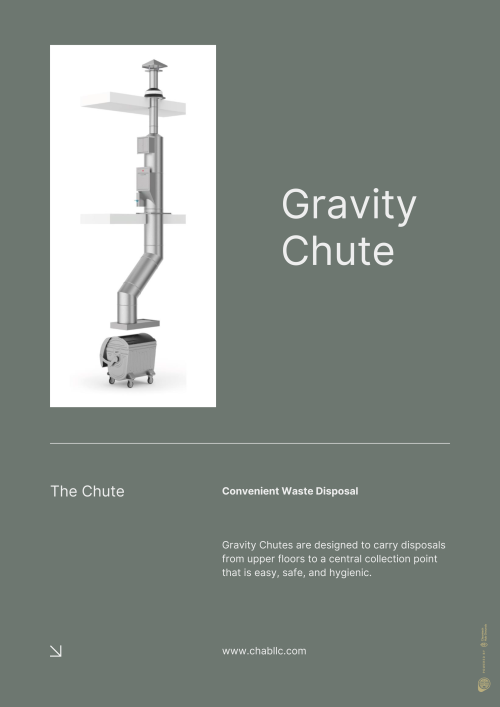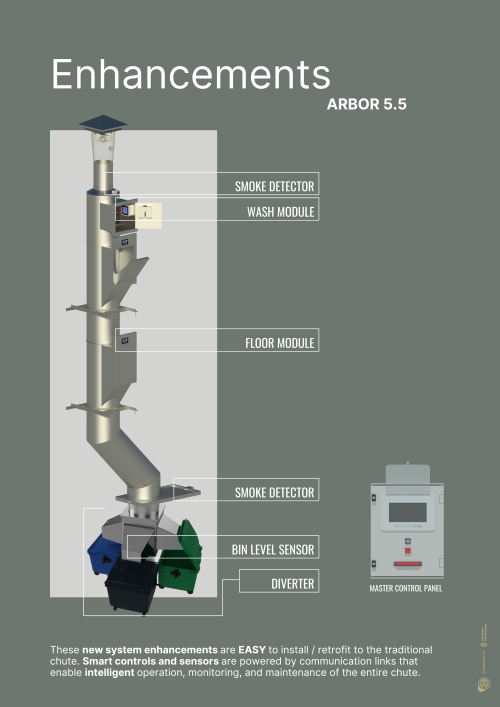The rapid urbanization and vertical growth of cities across the United Arab Emirates (UAE) have necessitated innovative solutions for waste management in high-rise buildings. Among the most practical and widely adopted systems is the garbage chute—a vertical shaft installed in residential and commercial towers to streamline waste disposal. These chutes have become a critical part of urban infrastructure, promoting hygiene, convenience, and efficiency.
What Are Garbage Chutes?
Garbage chutes are cylindrical tubes, typically made from stainless steel or fire-rated galvanized steel, that run vertically through a building. Residents deposit their waste into designated openings on each floor, and gravity carries the trash down to a centralized collection point, usually located in the basement or a dedicated waste room.

The Need for Chutes in the UAE
The UAE, particularly in emirates like Dubai and Abu Dhabi, has seen a dramatic increase in the construction of skyscrapers and residential towers. This vertical expansion has presented logistical challenges for traditional waste collection methods. Manual collection from each floor is not only labor-intensive but also increases the risk of spillage, odors, and pest infestations.
Garbage chutes address these issues by:
Reducing the physical handling of waste, thus improving hygiene.
Enhancing building aesthetics by removing the need for unsightly bins in hallways.
Minimizing odors and pests through sealed, well-ventilated, and fire-rated systems.
Improving efficiency for waste collection and management companies.
Regulations and Standards
The UAE has stringent building and safety codes to ensure garbage chutes are both functional and safe. Dubai Municipality and other emirate-level authorities mandate compliance with international safety and hygiene standards, including:
Fire-rated construction to prevent the chute from becoming a conduit for flames and smoke during emergencies.
Ventilation systems to control odor and pressure.
Automatic cleaning systems, including flush sprays and disinfectants, to maintain hygiene inside the chute.
Sound insulation to minimize noise during waste disposal.
Innovations and Smart Waste Management

Modern garbage chute systems in the UAE are now integrating smart technologies. Features include:
Touchless entry points to reduce contact and improve hygiene.
Sensors to detect blockages and alert maintenance teams.
Compactors and segregators that sort recyclable materials from general waste.
RFID-enabled systems that monitor usage and can be linked to resident waste quotas in green buildings.
These advances are part of a broader smart city initiative embraced by the UAE, aiming for sustainable urban development and improved resource efficiency.
Environmental Considerations
Despite their convenience, garbage chutes also present challenges, particularly when they encourage a "throwaway culture" that disregards recycling. To counter this, some UAE municipalities have introduced:
Separate chutes for recyclables like plastic, paper, and metal.
Public awareness campaigns on sustainable waste practices.
Incentive programs for residents and developers who adopt green waste disposal systems.
The Future of Garbage Chutes in the UAE
As the UAE continues to grow vertically, the relevance of garbage chutes will remain significant. However, the focus is shifting toward eco-friendly designs and integrated waste management systems. Developers are increasingly required to consider sustainability certifications like LEED and Estidama, which factor in waste management infrastructure.
In conclusion, garbage chutes are more than just a convenience—they're a key component of urban living in the UAE. With evolving technology and regulations, they are becoming smarter, safer, and more sustainable, playing a vital role in shaping the region’s modern skyline and environmental future.
